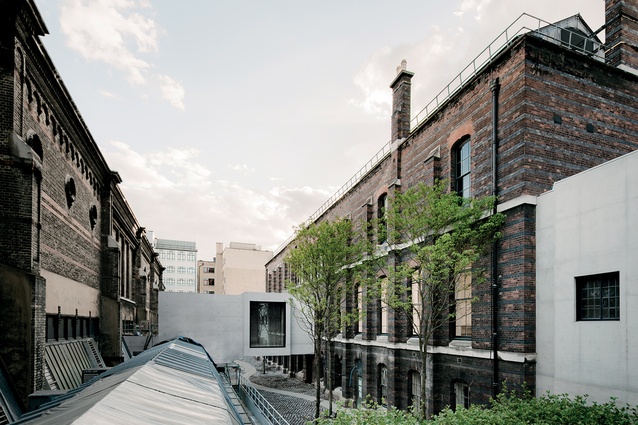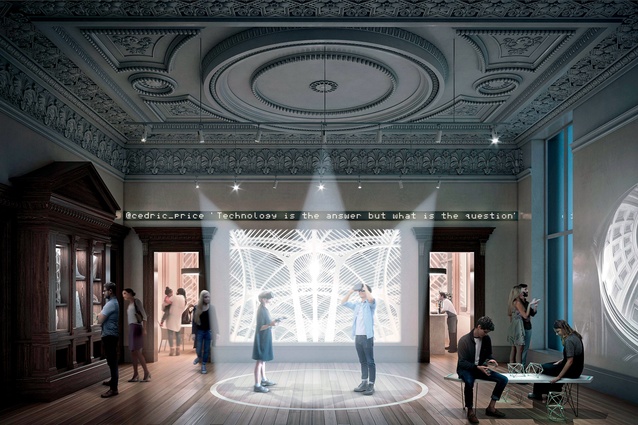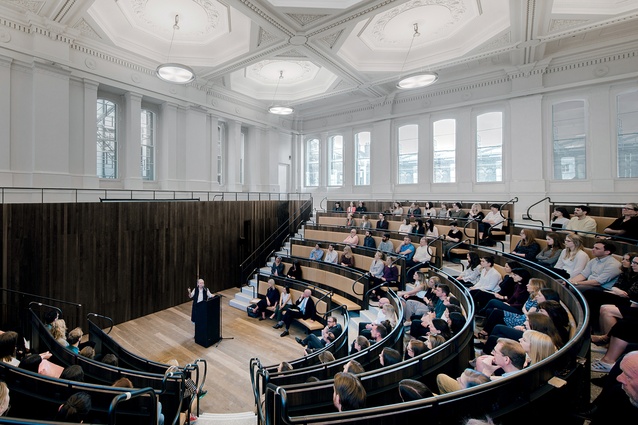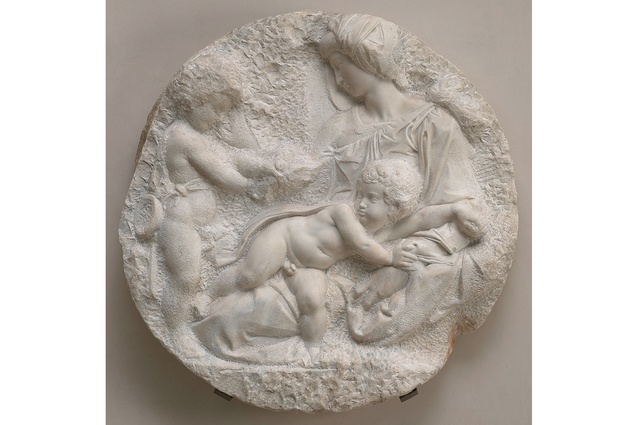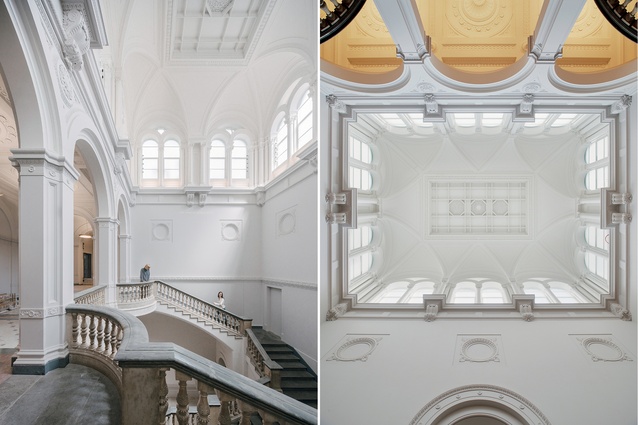Transforming the Royal Academy
Since 1768, the artist-and-architect-run Royal Academy in London has been a world-leading arts centre, made famous by its annual Summer Exhibition. To celebrate its 250th anniversary this year, David Chipperfield Architects have designed a newly expanded campus, reviewed by Colin Martin.
In 1768, Sir William Chambers, who had tutored George III in architecture and drawing during his youth, was one of 22 artists and architects who successfully petitioned the King to sign the Royal Academy of Arts’ Instrument of Foundation. Almost a century later, in 1867, after occupying various London premises, the Royal Academy (RA) was granted a 999-year government lease at Burlington House (completed in 1668; remodelled in Palladian style, 1717–1720) at a pound per annum.
Although Chambers had claimed that the RA “was planned by me and completed by my efforts”, the Burlington House courtyard is dominated by a bronze statue of the RA’s first president, Sir Joshua Reynolds, brandishing palette and brush.
In 2001, the RA acquired 6 Burlington Gardens (1866–1869), originally built for the University of London, which backs onto it. David Chipperfield Architects won a competition in 2008 to link and integrate the two buildings as a coherent whole. Building works began in 2015 and, this May, the RA opened its new two-acre ‘campus’, developed at a cost of £56 million, in time to celebrate the institution’s 250th anniversary.

With a 70 per cent gain on the Burlington House footprint, the whole is resoundingly greater than was the sum of its parts. Executed with Chipperfield’s characteristic restraint, it’s the opposite of ‘shouty’ museum architecture. “In 10 years’ time, it will be difficult to distinguish between old and new,” commented Chipperfield’s RA project architect, Peter Jurschitzka.
“The transformation and redevelopment project galvanised a complete rethink of the RA,” says its current president, artist Christopher Le Brun. An opportunity would have been lost if only ‘bricks and mortar’ issues had been considered, without an institutional master plan.
“We needed to link the two buildings and give a purpose to Burlington Gardens… which had been unloved over time,” explained Sir David Chipperfield RA. “Fortuitously, the front doors to Burlington House and Burlington Gardens are aligned on an axis, to within a metre of each other.” A public route directly linking the buildings was established through the ‘dead space’ of the Burlington House vaults, formerly used exclusively as a service corridor.
Rather than bisecting the sacrosanct, off-limits territory of the RA Schools and their postgraduate students’ studios, Chipperfield’s 15-metre-long, raw-concrete link bridge rises above it. This elevation compensates for the difference in height between Burlington House’s lower ground floor and Burlington Gardens’ ground floor, and the misaligned entries.

Partial glazing of the link bridge allows visitors to overlook the Schools’ courtyard and glimpse the sky. Chipperfield considers that establishing the Schools as the figurative heart of the RA campus was the most significant intervention. “Only a limited amount of additional exhibition space was required so it was possible to ‘give oxygen to the whole campus’ in the design,” he says. His bridge is key to its circulation.
The restoration of 6 Burlington Gardens’ damaged Italianate façade and internal restoration works on the Grade II* heritage-listed building were overseen by conservation specialists Julian Harrap Architects. Designed as an institutional building, its entrance hall is more generous than is Burlington House’s domestically scaled entry and accommodates new front-of-house spaces.
Restoration work on the entrance hall uncovered the original stone floor, beneath a later tiled covering. Its discovery led architects to rethink flooring and uniformity on the first floor, including the imposing Senate Rooms. Here, the colour scheme was restored to replicate its appearance in 1902, at the beginning of the Civil Service Commission’s tenancy.
Strikingly simple light fittings used there and throughout the building were designed by Chipperfield. The Collection Gallery, designed by Studio Adrien Gardère, displays works from the permanent collection, which illustrate ‘the making of an artist’.
Highlights include Michelangelo’s marble Taddei Tondo (1504-1505) and Giampietrino’s copy (c.1520) of Leonardo’s fresco of The Last Supper. A new lecture theatre, seating 259 people, is accessed from the first or ground floor. To make space for it, a previous tenant’s intervention, the British Academy Room (1929) – executed in a mix of art deco and neoclassical styles – was dismantled and reinstalled in a purpose-built extension as the Green Room for the new Benjamin West Lecture Theatre.
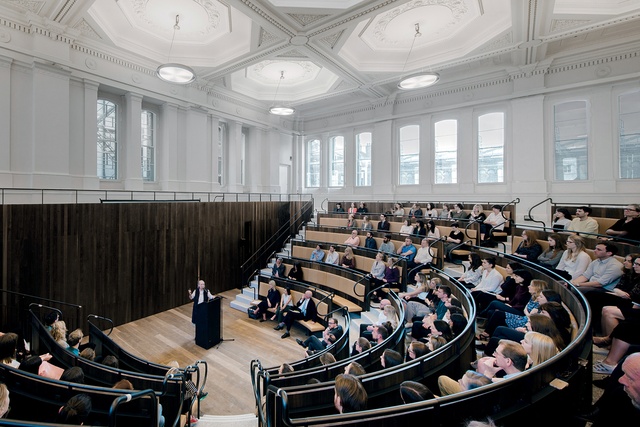
The South Galleries, three interconnected top-lit spaces (formerly laboratories and a dissecting room of the University of London), will house temporary exhibitions of art and architecture. The artist Tacita Dean’s Landscape exhibition, including her largest-ever chalk drawing and an ambitious 35mm film diptych, Antigone, is the first.
Coming up next is an exhibition surveying architect Renzo Piano’s career and there’s also a new Architecture Studio in the Senate Rooms. Invisible Landscapes, a series of three immersive interventions, will explore the impact of digital technology on contemporary use of domestic spaces (until 4 March 2019). The subject might well have bemused Sir William Chambers but, surely, he would have endorsed the RA policy of highlighting the importance of architecture as part of its 21st-century agenda.
The Royal Academy of Arts, 6 Burlington Gardens, London, is located at Piccadilly in Mayfair. The 250th Summer Exhibition, coordinated by Grayson Perry, runs until 19 August 2018. The Renzo Piano exhibition will be shown from 15 September 2018 – 20 January 2019. Invisible Landscapes runs until 4 March 2019.

